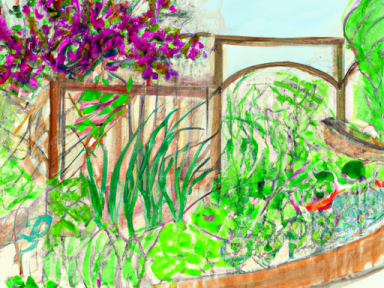Advanced Permaculture Design for Sustainable and Self-Sufficient Homesteading
In today’s uncertain world, it is more important than ever to be prepared for any potential crisis or disaster that may come our way. As a homesteader, the concept of self-reliance is at the core of everything we do. One of the most effective ways to achieve self-sufficiency is through the practice of permaculture design on our homesteads.
What is Permaculture Design?
Permaculture design is an integrated approach to creating sustainable systems that mimic the natural patterns and relationships found in nature. By observing and understanding how ecosystems function, we can design our homesteads to be productive, regenerative, and self-sustaining.
With the basic principles of permaculture in mind, let’s delve into some advanced techniques that can take your permaculture design to the next level:
1. Zone and Sector Planning
Zone and sector planning involves dividing your homestead into different zones based on their proximity to your living space and the frequency of use. By strategically organizing your zones, you can optimize your energy and time while minimizing the need for inputs.
Take the time to carefully assess which areas of your homestead require regular attention and which can be more hands-off. By placing high-maintenance zones closer to your living space and low-maintenance zones further out, you can reduce the time and effort needed to manage your land.
2. Guild Planting
In permaculture, guild planting refers to the practice of strategically grouping plants together based on their beneficial interactions. By understanding the needs and functions of different plant species, you can create mutually beneficial communities that enhance overall productivity.
For example, you can create a guild around a fruit tree by planting nitrogen-fixing plants to improve soil fertility, pest-repellent herbs to deter pests, and groundcover plants to suppress weeds and retain moisture. The synergy between the plants creates a self-sustaining system where each element supports and enhances the others.
3. Keyline Design
Keyline design is a technique that aims to optimize water flow and storage on your homestead. By surveying and contouring your land according to its natural features, you can create swales and berms that capture and redirect water, preventing erosion and maximizing water availability for plants.
Through keyline design, you can turn a rainwater runoff problem into a valuable resource. By capturing and storing water effectively, you create a more resilient and sustainable water management system for your homestead.
4. Animal Integration
Integrating animals into your permaculture system can provide numerous benefits. They can help control pests, provide natural fertilizer, and contribute to the overall resilience and harmony of the system.
Consider incorporating animal systems such as rotational grazing, where animals are moved across different sections of your land to maximize forage options and prevent overgrazing. This not only benefits the animals but also improves soil health and reduces the need for mowing or weed control.
5. Renewable Energy Systems
As a self-reliant homesteader, it is important to explore renewable energy options to reduce reliance on traditional power sources. Installing solar panels, wind turbines, or micro-hydro systems can provide a sustainable and reliable source of energy for your homestead.
By incorporating renewable energy systems into your permaculture design, you not only reduce your environmental impact but also gain greater control over your energy supply, increasing your self-sufficiency during times of crisis or emergency.
Conclusion
Implementing advanced permaculture design techniques on your homestead can significantly increase its resilience, sustainability, and self-sufficiency. By observing and working with the natural patterns and processes of the land, we can create thriving ecosystems that not only provide for our needs but also contribute to the overall health and well-being of the planet.
Remember, in the face of uncertainty, taking proactive steps towards self-reliance is essential. By investing time and effort into mastering advanced permaculture design techniques, you are equipping yourself with the skills and knowledge needed to thrive in any situation that may arise. Don’t wait for a crisis to strike – start implementing these techniques today and pave the way to a more sustainable and resilient future.




GIPHY App Key not set. Please check settings